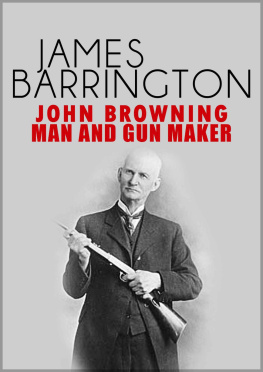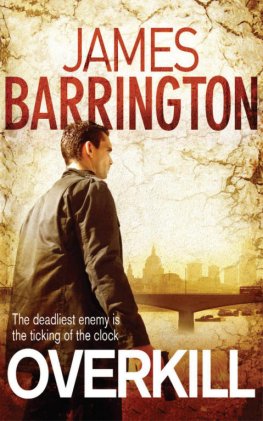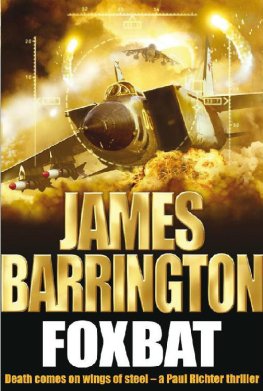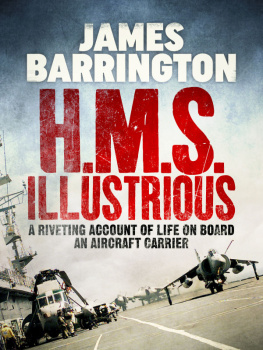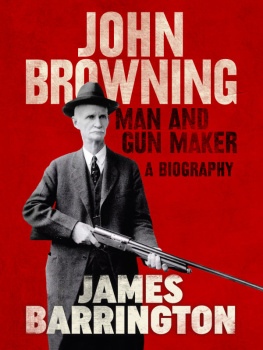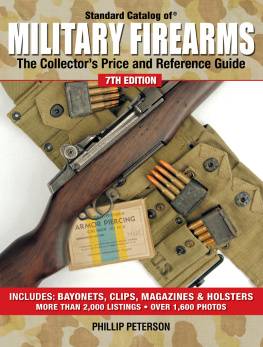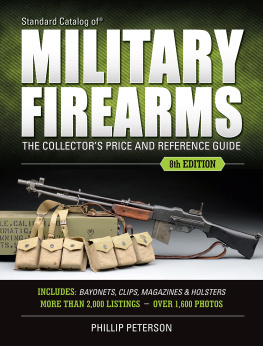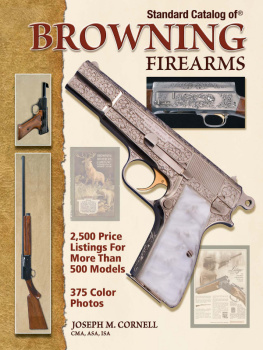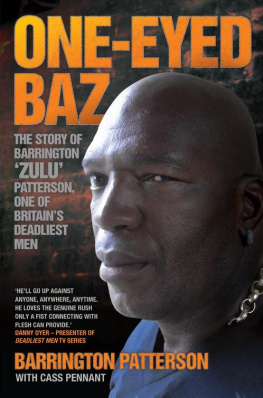JOHN BROWNING:
MAN AND GUNMAKER
James Barrington
James Barrington 2012
James Barrington has asserted his rightsunder the Copyright, Design and Patents Act, 1988, to be identified as theauthor of this work.
First published 2012 by Endeavour Press Ltd.
Contents
In any survey of the history offirearms development, it will quickly become apparent that the inventive geniusof one man advanced the state of the art at a totally unprecedented andunsurpassed rate. Nobody, before or since, has had a greater or even anythingapproaching an equal influence on the development of firearms. He was theauthor of 128 separate patents covering virtually all types of weapon frompistols upwards, and was unique in that his designs constituted virtually theentire output of three major American arms manufacturers in the first half ofthe last century, and have spawned countless imitations all over the world.
His namewas John Moses Browning, whose name is probably most closely linked with theautomatic pistols still produced in Belgium by Fabrique Nationale: in fact, inFrance the name Browning has passed into the language and is used as a propernoun and a synonym for a pistol. But Browning was not just a designer ofhandguns. He also profoundly influenced the development of machine-guns, riflesand shotguns, and it is a measure of the enduring popularity of his designsthat so many weapons covered by Browning patents are still manufactured today.
Thisshort book attempts to paint a picture of Browning the man, as well as describehis outstanding achievements in his chosen field. In fact, it could be saidthat John Browning didnt choose to become a gunsmith. You could argue that hisupbringing and his family, and to some extent his surroundings, chose hisprofession for him. And it really all started with his father.
John Browning was the son ofJonathan Browning, a Mormon who had been part of the great Mormon Exodus fromNauvoo, Illinois, to Utah in 1852. Jonathan had been born in 1805, and hadtrained at an early age as an apprentice gunsmith by the unusual device ofsimply arriving on the doorstep of a Nashville gunmaker named Samuel Porter andoffering to work for him for nothing in exchange for lessons in gunbarrel-making. Porter was so impressed with Jonathans work that he soonstarted paying him a wage of two dollars a week, in addition to providing bedand board, and when, after three months, Jonathan announced that he wasreturning to the Browning home at Brushy Fork, Tennessee, he offered him ashare of the business if he would agree to stay.
No doubtJonathan was tempted, but remained adamant. The two men parted as firm friends,Porter supplying Jonathan with rifling and boring tools as well as a selectionof mandrels used for hand-forging gun barrels of different sizes. Alsoincluded in his pack was a rifle made by Porter but carrying a barrel madeentirely by Jonathan, and on which the older man had stamped JONATHAN BROWNING1824.
From this small and inauspicious beginning,Jonathan Browning established himself as a competent rural gunmaker, repairingdamaged weapons and producing rifles to order, but his aspirations were higher.Following marriage and a family move from Brushy Fork to Quincy, Illinois, in1834, he concentrated his considerable abilities on the problem of designing asimple but efficient repeating rifle.
The problem he had wasthat in those days the propellant was black powder and the ignition source apercussion cap. To load a rifle, a suitable measure of black powder was poureddown the barrel from the muzzle, usually from a powder flask, to be followed bya small piece of wadding or other material. Then the ball would follow, whichwould be rammed firmly into place to compress the powder charge. A percussioncap would be placed on the nipple below the hammer, and the weapon was thenready to fire. When the trigger was pulled, the falling hammer struck thepercussion cap, which fired a spark down a tube and into the barrel, ignitingthe black powder and driving the ball down the barrel.
Each barrel of a riflewas a single-shot weapon, and the only way a hunter could have a second shotimmediately available was either to have a second weapon to hand, or use adouble- or multiple-barrelled rifle, and it was that problem which JonathanBrowning set out to solve. What he did was to approach the problem usinglateral thinking. Instead of adding another barrel, he decided to cut off thebreech end of the barrel and then designed a kind of multi-chamber breechblock.
His endeavoursucceeded, and the result was one of the simplest practical repeating weaponsever produced. Known as a Slide Gun, a Slide Repeating Rifle, or sometimes aHarmonica Rifle, its five-shot magazine was fabricated from a solid rectangularbar, each chamber having an integral nipple, and was passed through the breechfrom side to side. The magazine was moved on after each shot by athumb-operated lever, which also forced the chamber forward into agas-tight alignment with the barrel, while the hammer was positioned below thebreech in front of the trigger guard. Larger capacity magazines, withcapacities of 10 or 25 shots, were available to special order from Jonathan,and each rifle was supplied with at least one spare magazine, thus giving theowner a minimum of ten rapid shots if required.
Crude though this may sound,the weapon was capable of sustained fire at a rate unequalled by any otherweapon of the time, and as recently as 1952 an example of the weapon held inthe Browning Family Collection was used to fire fifteen rounds withoutmalfunction.
In fact, Jonathan also inventeda second type of repeating rifle at about the same time. This was a cylinderrepeating rifle, similar in concept to the mechanism of a single-actionrevolver.
The slide rifle which, like thecylinder repeater, was not patented by Jonathan Browning, was an immediatesuccess in the area, producing far more orders than he could possibly fill, andwould no doubt have become a much more popular weapon had Browningsmanufacturing capacity been equal to his design ability.
Its worthwhile contrastingthis weapon, essentially knocked together by a self-taught gunsmith in ablacksmiths shop, with the Colt Revolving Rifle, produced in 1855 by thisfully-equipped and experienced manufacturer of firearms. The Colt weapon was afailure, because its design didnt address the problem which JonathanBrownings prodigious talent had solved: the Colt couldnt maintain a gas-tightseal between the barrel and the chamber, which led to misfires, gas leakage andindifferent performance.
In 1840 Jonathan Browning, bythen an established member of the community and a good friend of the youngAbraham Lincoln, became deeply interested in religion and, in particular, theteachings of the Mormon Church. The direct result of this interest was theBrowning familys move, in 1842, to the city of Nauvoo, Illinois, which wasbeing constructed on the instructions of Joseph Smith, the founder and Prophetof the Church of Jesus Christ of Latter-Day Saints.
The Mormons were not popular inthe area, being subjected to frequent attacks by armed Illinois and Missourigangs, and the violence reached a peak in June 1844 when Joseph Smith and hisbrother, Hyrum, were assassinated at Carthage, Illinois. This action was thespur that led to the great Mormon Exodus under Brigham Young, which started in1846 and continued for some years. Though Jonathan Browning was eager to headwest with the pioneers, Young recognized his worth and insisted that he stay toprovide the weapons so desperately needed by the Saints, and it wasnt until1852 that Jonathan was permitted to follow the trail from Nauvoo that ledeventually through the Rocky Mountains to Utah and Ogden in the valley of theGreat Salt Lake.
The violence at Nauvoo and thelong trek west had left their mark on Jonathan Browning, and he never againapplied himself to the development of new weapons, contenting himself withrepairing and refurbishing not only guns but any kind of mechanical contraptionwhich required attention. The Browning gunsmith building in Nauvoo is now amuseum open to the public.
Next page
